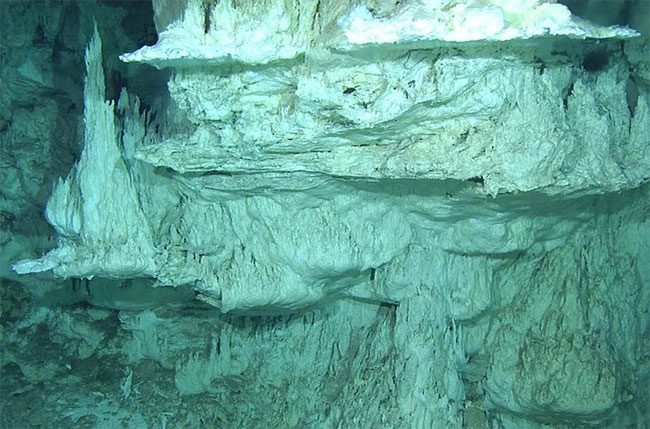Scientists have discovered a tiny, previously unknown organism on Earth that may also exist in the ocean worlds of other planets, such as Jupiter’s moon Europa or Saturn’s moon Enceladus.
According to Space, the small “monster” is named Sulfurimonas pluma, belonging to a mysterious group of organisms that, until now, have only been found in the deep-sea hydrothermal vents on Earth.
Its Earth relatives typically inhabit “suffocating” environments due to high oxygen levels, but this particular species has emerged in oxygen-rich areas at the ocean floor, where a hydrothermal system exists—believed to be a “factory for life” on planets.

“Lost City” recently discovered by scientists, resembling Europa and Enceladus, teeming with life – (Photo: NOAA).
Hydrothermal systems on the ocean floor have been shown by research to be areas where prebiotic factors come together, reacting due to the heat and resources provided by these systems, to create the simplest forms of life on Earth. This is believed to be similar in extraterrestrial ocean worlds that have conditions allowing hydrothermal systems to thrive.
Europa and Enceladus, two destinations that NASA is preparing for direct life-hunting missions, also contain similar oceans. Therefore, the organism recently discovered in what the research team refers to as the “Lost City”—implying a populous and forgotten world—could very well have relatives living on those two mysterious moons.
“It is incredibly exciting to see such microorganisms not only thriving but also actively engaging in their environment,” said Dr. Massimiliano Molari from the Max Planck Institute for Marine Microbiology (Germany) in an email to Space.
A unique genetic change has enabled this bacterial relative to extract energy from various sources. They multiply and thrive in all kinds of terrains and conditions at the ocean’s depths, including conditions similar to those astronomers have found on extraterrestrial worlds.
This is where hot hydrothermal flows shoot up hundreds of meters, gradually gaining oxygen by mixing with the surrounding oxygen-rich seawater. Evidence of similar flows has been recorded by NASA’s exploratory spacecraft, such as the Cassini spacecraft that explored Saturn when it flew by Enceladus.
Thus, these organisms will serve as useful experiments to provide details about the types of life that future NASA missions should search for on other planets and moons.


















































